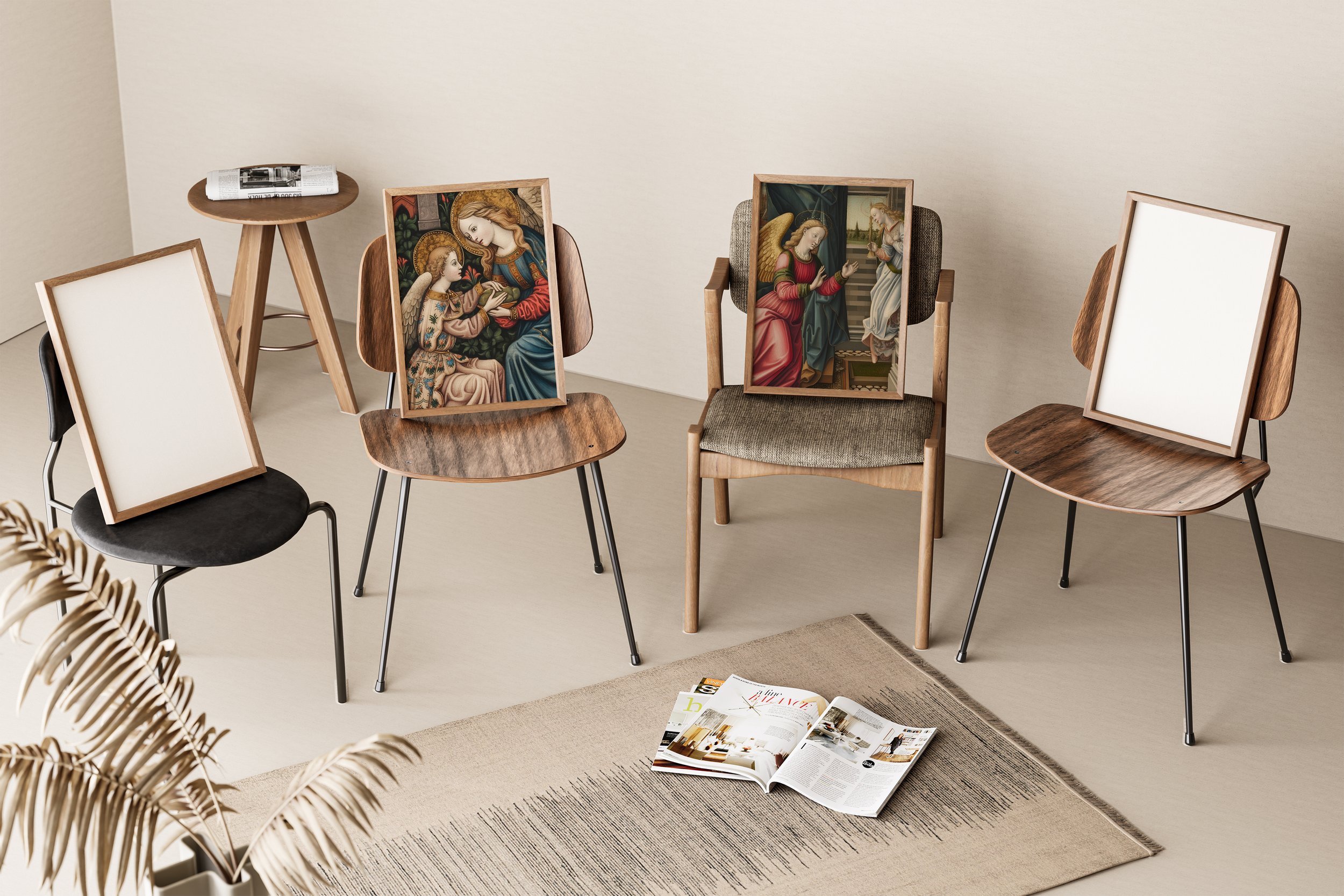
Centering on the Almighty
A comprehensive guide to framing Christian art prints.
Guide to Framing Christian Art Prints
-
Select a frame that complements the art print's style and enhances its visual appeal. Classic wooden frames work well with various art genres, while contemporary metal frames can add a modern touch. Consider the frame's color, texture, and profile, considering how it harmonizes with the artwork and the surrounding decor.
-
Matting provides a border between the artwork and the frame, drawing attention to the print and adding a sophisticated touch. Opt for acid-free and archival-quality matboards to protect the print and prevent discoloration over time. Decide on the matboard's color and width, keeping in mind the proportions of the art print and the frame.
-
For valuable or delicate art prints, consider conservation framing. This method utilizes acid-free materials and UV-protective glass or acrylic to prevent fading, yellowing, and damage from environmental factors, ensuring the long-term preservation of the artwork.
-
Choose the appropriate mounting technique based on the print's size and fragility. Hinging or using archival photo corners can secure the art print to the backing board without causing damage. For larger prints, consider dry mounting, which permanently attaches the print to the backing board using heat.
-
When framing a print with a mat, use a spacer or mat lifter to create a slight gap between the artwork and the glazing. This helps prevent the print from sticking to the glass or acrylic, especially in high-humidity environments.
-
Select glazing materials that protect the art print while allowing optimal viewing. Regular glass, acrylic, or museum-grade UV-protective glazing are popular options. Museum-grade glazing offers the best protection against UV rays, reducing the risk of fading and damage.
-
Ensure the art print is mounted securely within the frame to prevent shifting or damage during handling. Use acid-free and archival-quality materials to adhere the print to the backing board.
-
Use appropriate hanging hardware suitable for the frame's weight and size. Consider using D-rings or wire for larger frames and sawtooth hangers for smaller ones. Make sure the hanging hardware is correctly positioned to achieve a level and secure display.
-
Select an appropriate display location for your framed art prints. Avoid areas with direct sunlight or extreme humidity, as these conditions can cause fading or warping over time. A well-lit area that allows the artwork to shine and be appreciated is ideal.
-
Regularly dust the framed art prints with a soft, dry cloth to keep them looking pristine. Avoid using cleaning chemicals or liquids on the frame or glazing to prevent damage.
